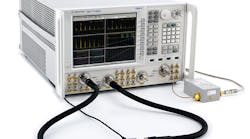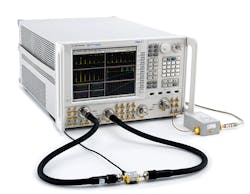Most of us have waited on line at the workplace for a signal generator, or a spectrum analyzer, or even a digital multimeter. We may have even sneaked the use of a piece of test equipment from a coworker during their lunch break, to try to get some test results on a particular project. At any engineering facility worth its salt, test equipment will usually be in demand, and there is always the “engineering complaint” of there not being enough test equipment “in the house.” Many of us have asked, “Why doesn’t the company simply invest in more test gear so that the engineering staff can work more efficiently and effectively?” And most of us have received official corporate responses from our managers that the test equipment is simply too expensive to invest in spares, and that we must make do as best we can with the current lineup of test equipment.
Anyone who has ever purchased test equipment would likely acknowledge that it is expensive, perhaps without fully understanding that the high price is not simply inflated profit margin. Over the past few decades, more than a few visits to test-equipment manufacturers around the world have revealed a recurring theme: the high number of investments that test-and-measurement companies make in the pursuit of improved technologies and higher performance.
Early visits to test-equipment developers always resulted in a certain amount of surprise. In the high-frequency part of electronics, it is always useful to think of test-and-measurement companies as system houses: their command of technologies must extend from the device and semiconductor levels all the way through to systems integration and development of measurement methods to apply to their own products. What was surprising at some companies was the amount of effort and research that was put into product areas that may have been taken for granted by more than a few military systems houses, such as components and circuit materials. Larger test-and-measurement-equipment developers were never content to accept the published data sheets for something like a printed-circuit-board (PCB) dielectric material. Rather, they would apply standardized test methods and some of their own techniques to explore the validity of such parameters as dielectric constant, consistency of dielectric constant across the material, and even temperature coefficient of expansion (TCE), to better understand how a particular PCB material might behave within the thermal environment of a signal generator or a spectrum analyzer.
Larger test-and-measurement companies would generously show their different laboratories during a visit, and the extent of these different research efforts was often astounding, at times including custom semiconductor devices from different foundries and specialized methods for characterizing these devices.
All this effort, this research and investigation of different technologies, may not be apparent to the purchaser of a particular test-and-measurement product, but it will contribute to the accuracy and repeatability of the measurement results. Those who are willing to take on the restrictions of their test-equipment warranties and pulled the cover off their signal generator or analyzer will have noticed standard components “under the hood” from well-known components suppliers but, depending on the price and quality grade of the instrument, perhaps just as many custom components and integrated circuits (ICs) that might have been developed specifically for that instrument model.
Even with these customized and specialized components, RF/microwave test instruments are remarkably reliable and provide accurate measurement results when needed. That instrument in the test rack or on the test bench may even be a first-generation model, but it has taken a long road of testing to reach the market. Test-equipment suppliers may even be overly cautious with the amount of testing that they do to the different parts of a test product, from the input circuitry through the display screen. But the end result is an instrument that performs when needed and with consistent and repeatable results. If anything, test equipment at many companies can be shuttled around from department to department as different groups put in their requests to use a particular instrument. But in spite of moving around a company, the test equipment works when plugged in and performs almost automatically.
Admittedly, some pieces of test gear, such as vector network analyzers (VNAs) and synthesized signal generators, can represent significant investments, and that’s certainly one reason why many companies don’t “overstock” on test equipment. But when one considers the performance, durability, and reliability delivered by many modern commercial RF/microwave test instruments, the cost of a piece of test gear may appear to be more of a bargain.

